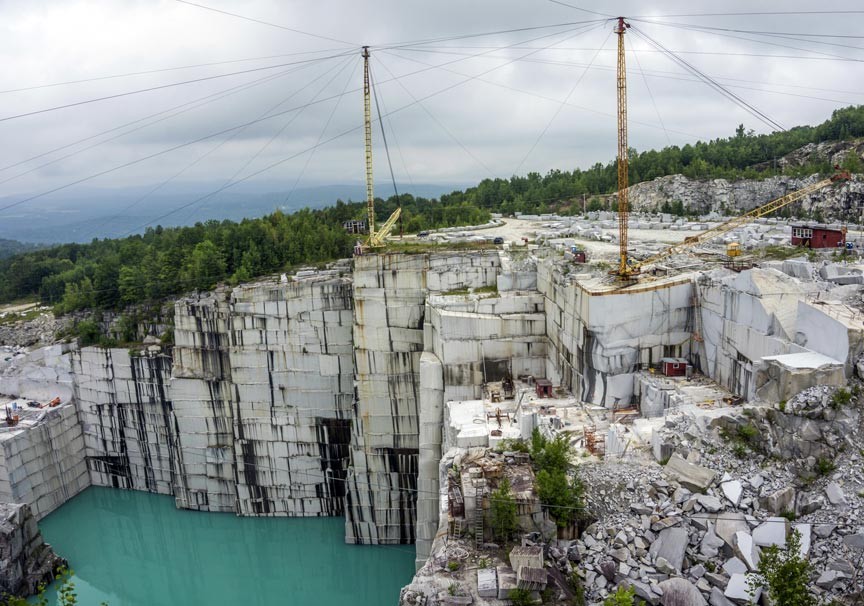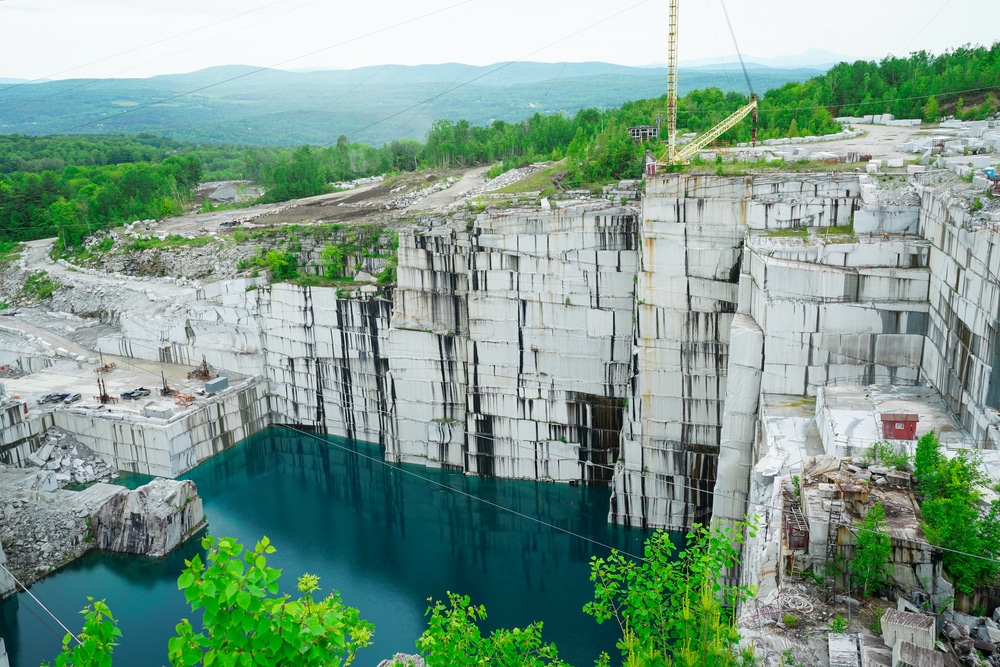Discovering the Hidden Midst of Granite Quarrying: Introduction Nature's Masterpiece
The world of granite quarrying is a world where nature's ancient processes fulfill human ingenuity in a symbiotic dance that has formed landscapes and human beings for centuries. From the intricate geological developments that birth this majestic stone to the thorough strategies and tools utilized in its removal, the journey into granite quarrying is a testimony to the harmonious coexistence in between guy and nature. As we start to unravel the layers of this industry, we are fulfilled with a tapestry of ecological factors to consider, creative ventures, and international ramifications that bid us to discover additionally the covert midsts of this natural masterpiece.

Geological Development of Granite
Granite, a kind of igneous rock, develops deep within the Planet's crust through a complicated process of air conditioning and solidification. The cooling process can take millions of years, permitting for the advancement of large mineral grains that give granite its unique appearance and durability.
Geologically, granite is classified as a felsic invasive rock, suggesting it is abundant in silica minerals and types from lava that intrudes right into existing rock developments. This invasive formation process contributes to granite's coarse-grained texture and high compressive toughness, making it a preferred choice for building and construction and architectural purposes. Because of its appeal, resilience, and resistance to warmth and scratches, granite has come to be an in-demand material for kitchen counters, flooring, and ornamental components in both household and commercial settings.
Quarrying Methods and Devices
Making use of innovative equipment and accurate methods, quarrying procedures remove granite from natural down payments with effectiveness and precision. Ruby cord saws are frequently utilized to cut through the granite, as they provide precision cutting without creating damage to the stone.
Huge excavators and loaders are then used to get rid of the cut granite obstructs from the quarry. On the whole, the mix of sophisticated equipment and knowledgeable labor is vital in the quarrying process to remove granite properly while preserving its quality.
Ecological Impact and Sustainability
With the enhancing concentrate on environmental consciousness in commercial practices, the granite quarrying industry is under examination for its effect on ecosystems and natural deposits. Quarrying for granite can have considerable ecological repercussions, including environment damage, dirt disintegration, and water contamination. The extraction of granite often entails the usage of explosives to damage the rock, causing sound and air pollution. In addition, the heavy machinery utilized in quarrying operations consumes large amounts of power, adding to greenhouse gas exhausts.
To alleviate these environmental effects, sustainable quarrying techniques are being established. Companies are executing steps such as reforestation programs, water recycling systems, and dust reductions techniques to decrease their eco-friendly footprint. Additionally, some quarries are now utilizing renewable find more information resource sources to power their procedures, reducing dependence on nonrenewable fuel sources.
Artistry in Granite Sculpting
The complex process of transforming raw granite into sensational artworks requires extraordinary ability and craftsmanship. granite quarries in south africa. Granite sculpting is a thorough art type that demands perseverance, imagination, and a severe understanding of the rock's buildings. Artists need to have a deep appreciation for the all-natural beauty of granite and the capacity to envision and extract the hidden virtuosity within it
Artistry in granite sculpting involves a collection of precise steps. The carver begins by selecting the perfect granite slab, thinking about elements such as color, veining, and texture. Utilizing specialized devices like chisels, mills, and polishers, the sculptor meticulously sculpts, forms, and improves the stone to bring their vision to life. Each chisel mark, each contour, and each polish is a purposeful and computed move towards excellence.
The last result of granite sculpting is a spectacular work of art that showcases the sculptor's talent and the integral beauty of the rock itself. Whether it's a marvelous statue, a complex water fountain, or a thorough relief carving, granite sculptures stand as testimonies to human creativity and the long-lasting appeal of all-natural products.
International Importance of Granite Sector
Playing useful site a crucial role in building and construction and architectural jobs worldwide, the granite market serves as a cornerstone in the global economic climate. With its adaptability, durability, and visual appeal, granite has ended up being a favored selection for a vast array of applications, consisting of counter tops, floor covering, monuments, and facades. The market not just provides work chances but also drives economic development through exports and regional consumption.

Additionally, the granite market plays an important function in sustainable development campaigns by advertising responsible quarrying practices and spending in environmentally friendly modern technologies. As the need for natural rock remains to climb, the international significance of the granite sector in forming urban landscapes and protecting cultural heritage can not be overemphasized.
Final Thought
In verdict, the granite quarrying industry plays a crucial duty in showcasing nature's masterpiece. From its geological development to the creativity in sculpting, granite proceeds to hold international importance.